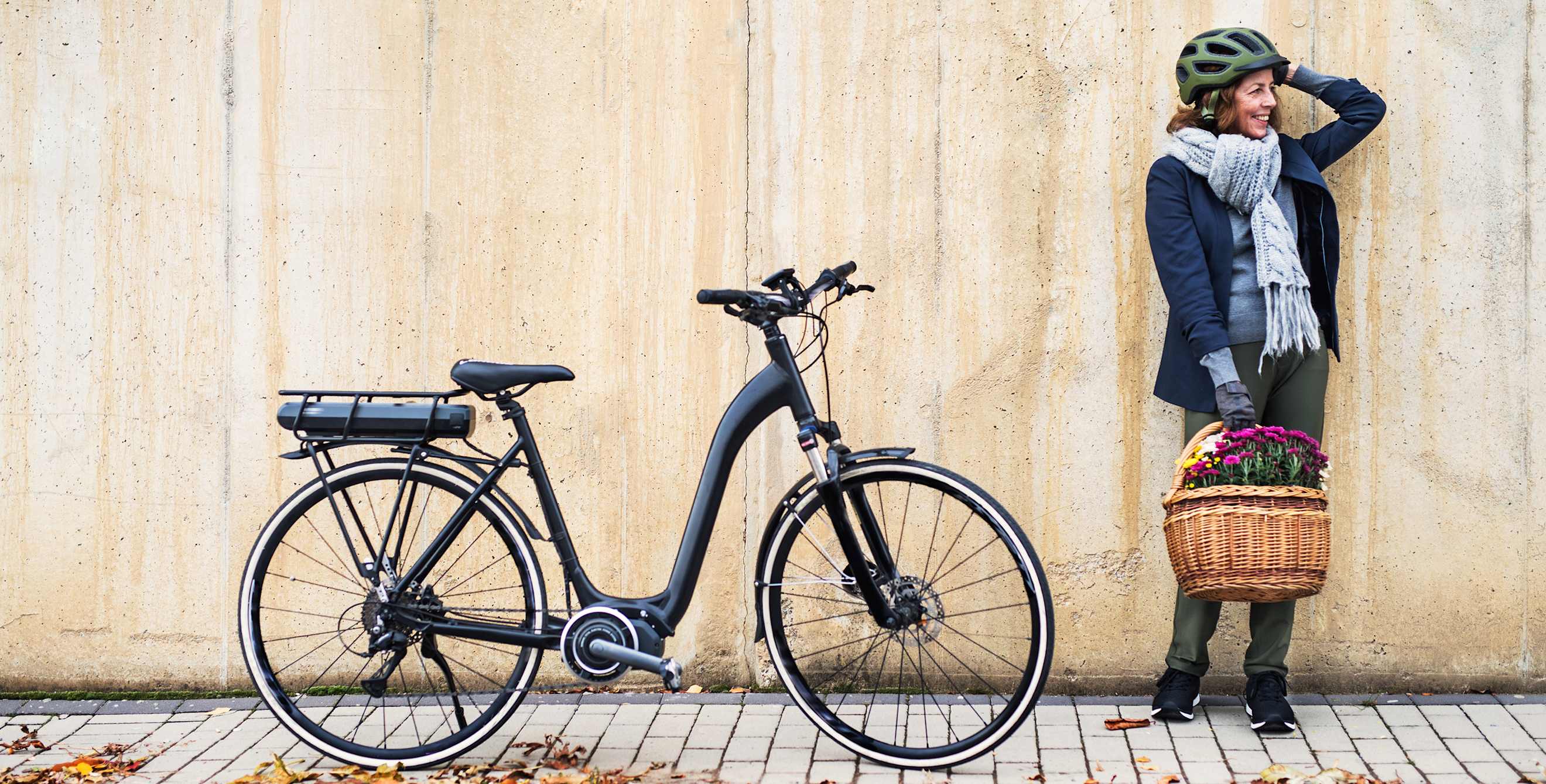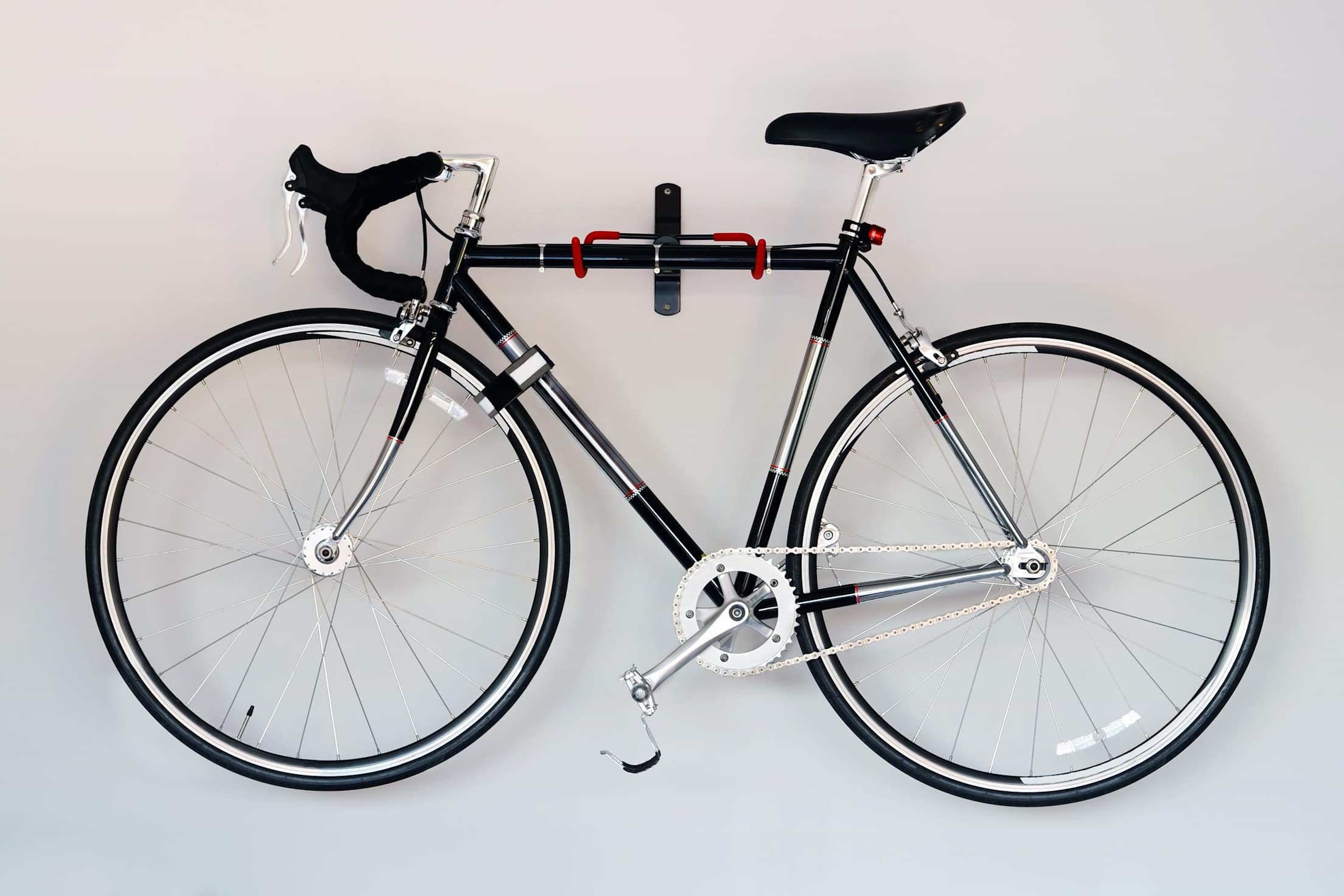
How to Park, Lock, and Store Your Bike
Deter thieves and protect your bike while on the street and at home.

Parking a bike properly is one of the most basic things every cyclist needs to know. Here's how you should be storing your wheels, whether you’re grabbing a quick cup of coffee or putting your bike away for the season.
How to Best Lock Your Bike
Here's the bad news: There’s no fail-safe way to lock your bike without some risk of it being stolen or damaged, especially in major cities. However, there are some key steps that will make it more difficult to steal your bike.
Always lock both wheels.
"A lot of times people will only lock the front wheel," says Sylvie Froncek, the programs director at the San Diego County Bicycle Coalition. "That means that if it's a quick release, the frame and the back wheel can get taken instantly."
For a quick-release front wheel, you can pop it off and lock it alongside your rear wheel. If you happen to be riding with a friend, lock your bike to your friend's (pointing in reverse directions) and to a bike rack to avoid removing the wheel. If you must choose one tire to secure, lock the most expensive parts of your bike: the frame and rear wheel.
Choose the right lock.
Your lock is your last line of defense, and you want to choose one that makes it as difficult as possible to break or remove. Froncek recommends Kryptonite's security guide, which uses a matrix of variables to determine the best lock setup based on how long the stop is going to be and where you're planning to leave your bike. The most secure setup is to lock your bike frame and rear wheel to a bolted or cemented bike rack with a sturdy U-lock and to lock your front wheel with a chain or another U-lock. You can also use a small chain to make it more work to walk off with your bike seat or panniers.
Always park in visible areas and lock to secure objects.
High-traffic areas make it riskier for a thief to go after your bike. Jess Nolasco, a bike mechanic at New York City's Recycle a Bicycle, looks for food vendors or other people who will see her lock up and who can give a shout if they see someone else try to take it.
What you lock your bike to is vital. When you can, only park at hefty bike racks that are firmly secured to the ground (give it an upward tug to double check). Even if you've securely locked to what seems like a solid object, thieves may cut through or unbolt the anchor itself, especially if it's something like a small tree or a signpost. "I've seen people locked to something like a pole without a sign on it, so you could just lift the bike up high enough and slide the bike and lock off," says Froncek.

Don’t forget your accessories.
In places where crime is an issue, it's worthwhile to secure anything that's easily removable—especially lights, which can be stolen in seconds and are illegal to ride without after dark—or take it with you. An Allen wrench or hex key set is all a thief needs to walk off with your seat, handlebars, pedals, and more. The Canadian company Pinhead makes locks for wheels, saddles, seatposts, and headsets. Each comes with a unique key, which you can register with the company to order multiple components that are only compatible with your private key rather than a standard Allen wrench. "If you have quick release wheels, I would definitely recommend getting Pinheads," says Nolasco.
Smart Tip: Prepare for the worst. Register your bike at Bike Index and 529 Garage. These sites make it easy to mark if your bike has been stolen, and they allow law enforcement or potential buyers to see that the bike belongs to you and get in touch. You should also keep your bike’s serial number and up-to-date photos of you with your bike on hand to include in a police report should it be stolen.

How to Store Your Bike at Home
Storing your bike at home is ostensibly safer, but it's still important to take precautions to prevent theft and unnecessary damage.
Take it inside.
Inside is always best. Whether you can store your bike in a shed, garage, or your living space, you want to choose a place that protects your bike from the elements and would-be thieves. "You don't want to get it wet, you don't want to get it salty, you don't want things like sand blowing into it," says Froncek. Humidity is not great for bikes, either, so avoid it if you can.
Hang it up.
Use specially designed hooks to hang your bike from a wall or ceiling. This is not only ideal for your wheels, which can be damaged when left standing for extended periods, but it’s also space efficient. "A lot of people expect that hanging a bike is gonna be a bit of a feat," says Froncek. "As long as you can find the studs on a wall, you can mount bike hooks." Even if you live in a rental, the screw holes are often quite small and can be easily spackled if you need to move out.
Hanging is especially important if you plan to store a bike long-term. If you aren't able to hang it, Nolasco suggests pumping up your tires regularly and rotating the wheels so they're not resting on the same spot for months (or years). If you’re storing your bike for the season or for the foreseeable future, give your bike a little TLC before storage: wipe it down, lube the chain, and oil your cables by dropping a little Tri-Flow or a similar lubricant into the housing to ensure that your bike is in good shape when you pull it back out again.

Lock and cover outside.
If outside is your only option, protect your bike from the elements as best you can with an overhang or a waterproof cover and stow it somewhere that's invisible to the public. "I've known a lot of people that have left it on a patio because that was the convenient space, and then they found out that someone had been watching them come home with the bike and [stole it] one day," says Froncek. Beware of lower balconies as well. If you have a shared storage space or are worried about thieves, there's no downside to locking your bike at home, aside from taking a little extra time to get on the road.
"The most important thing is finding a place that you'll still be able to get to and use the bike," says Froncek. Whatever your storage solution ends up being, it should be easy to take your bike out and properly put it away again.